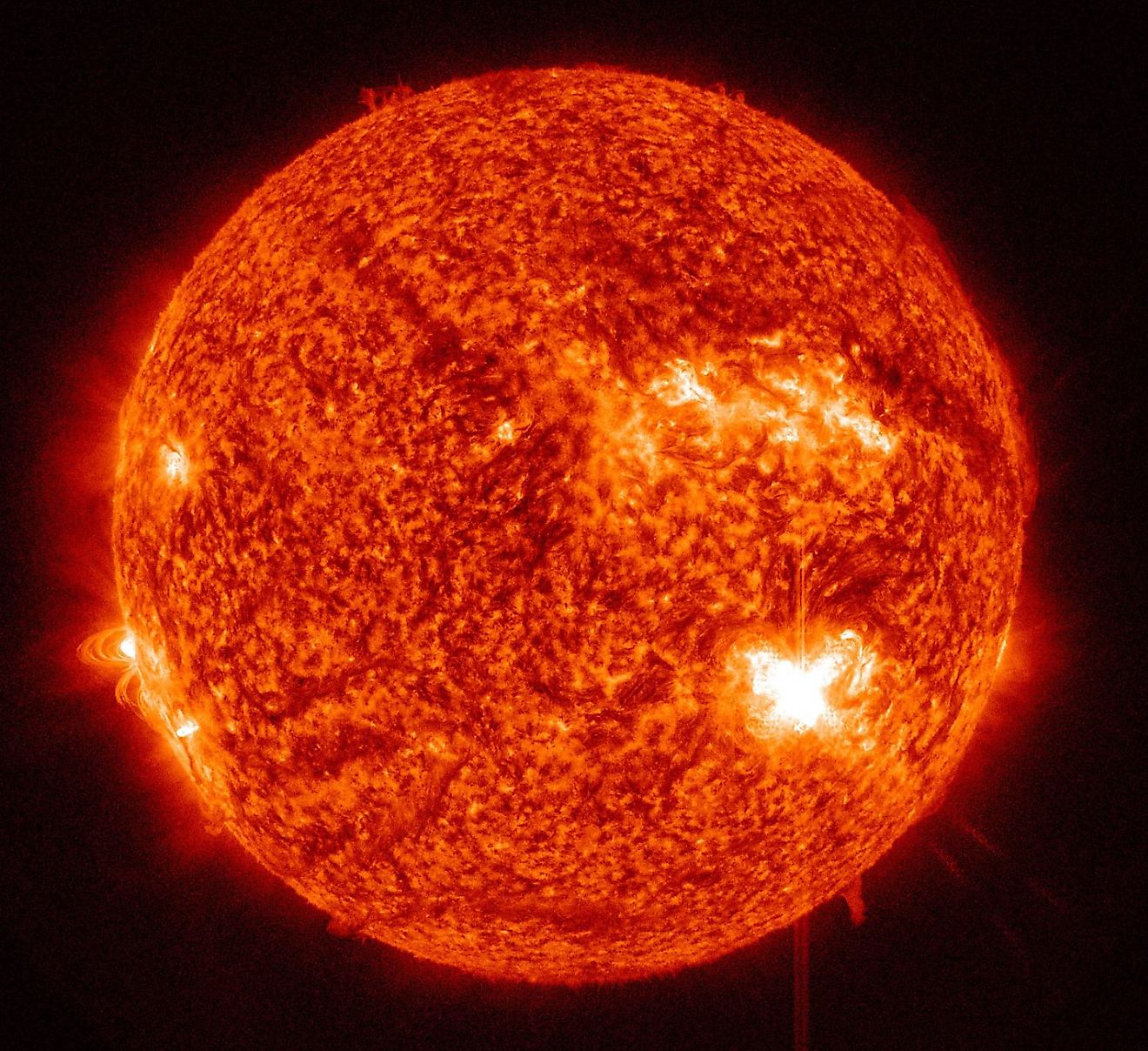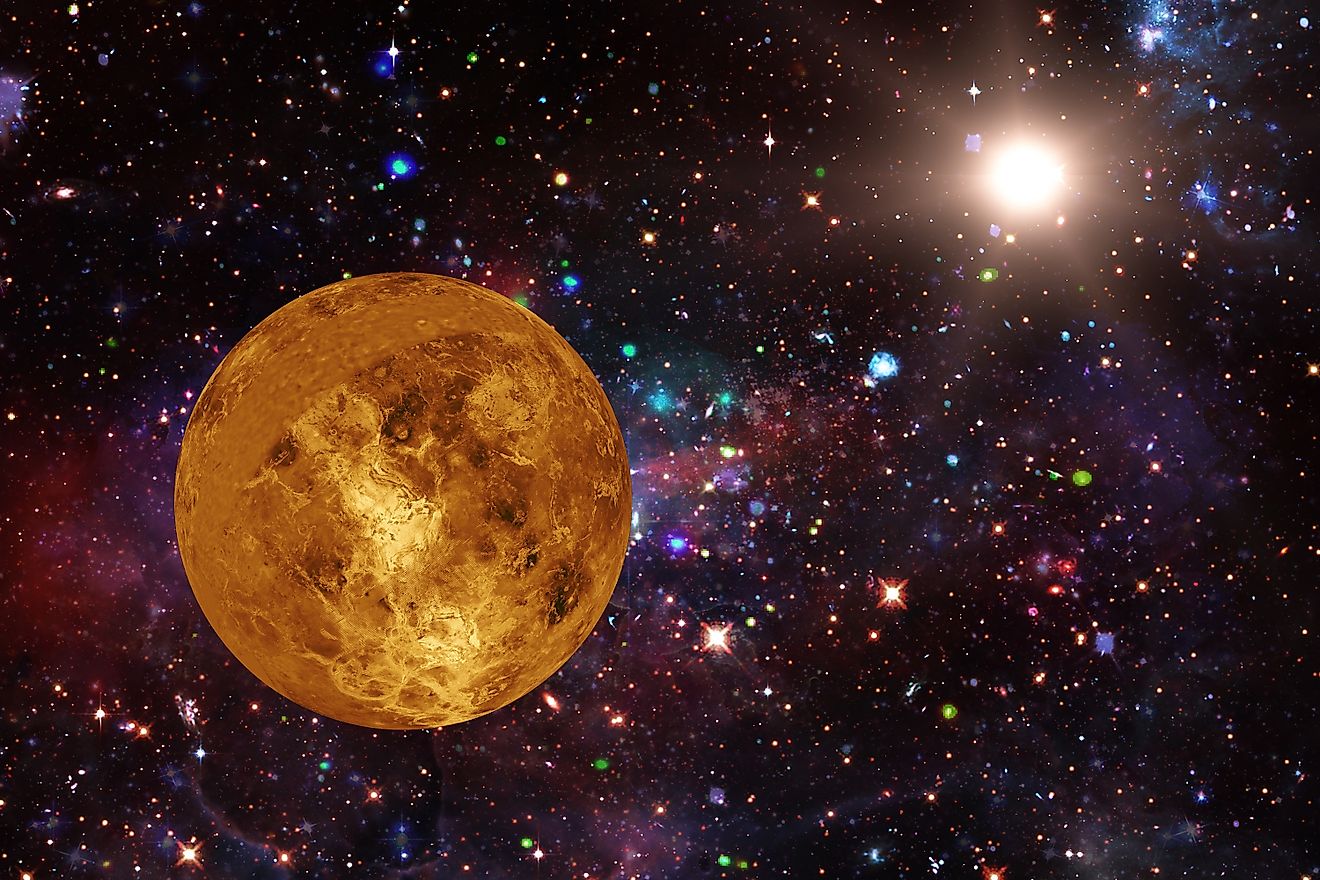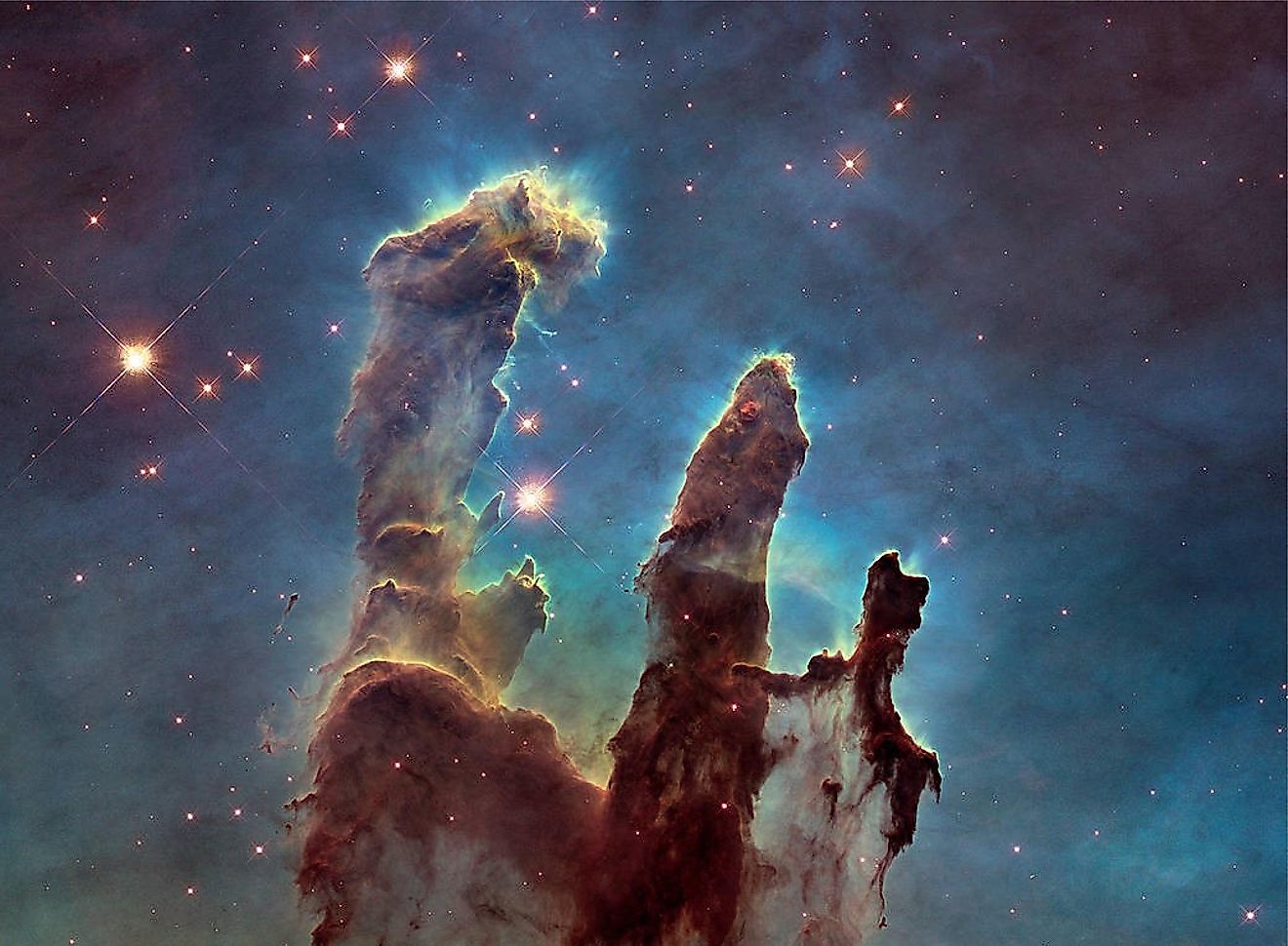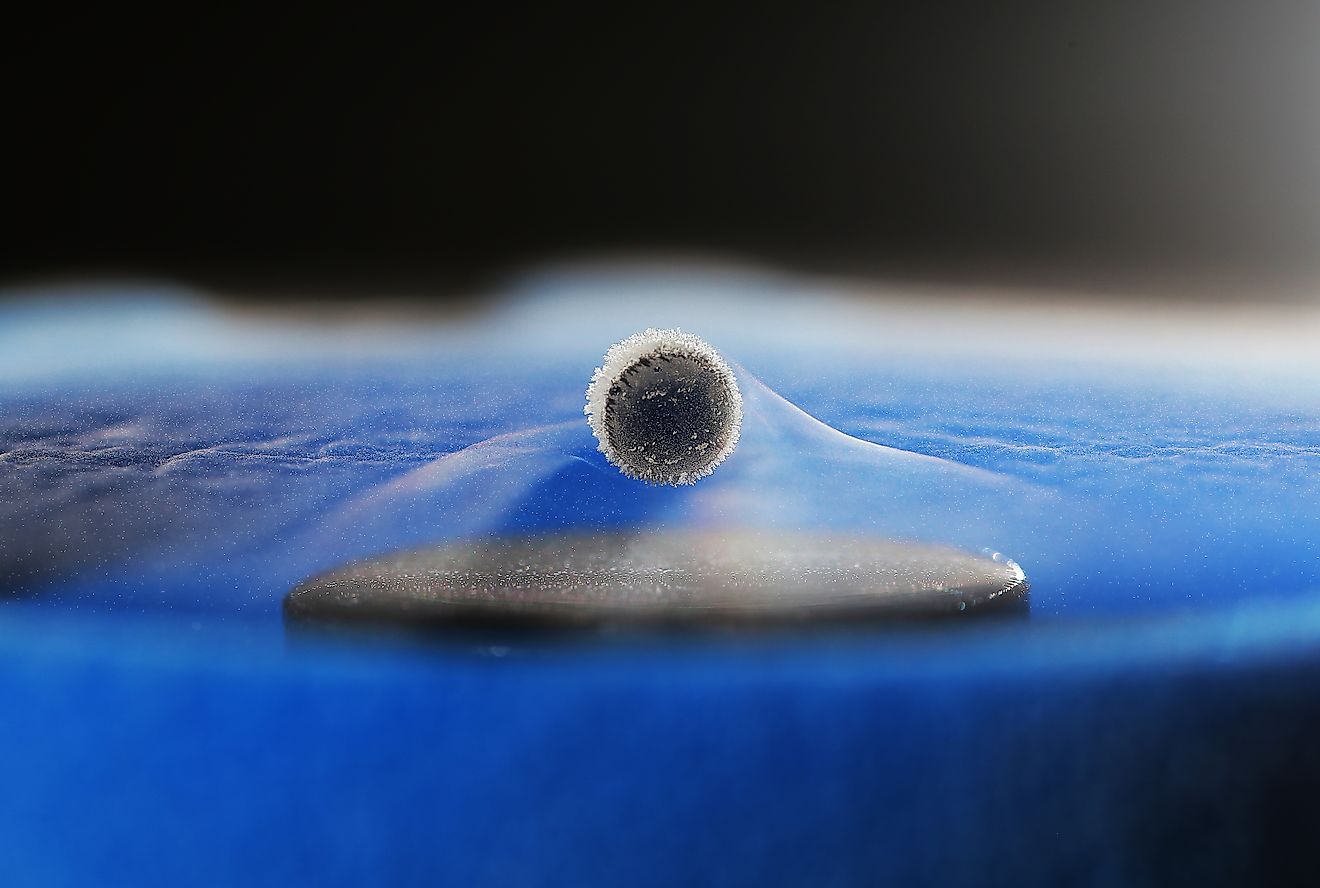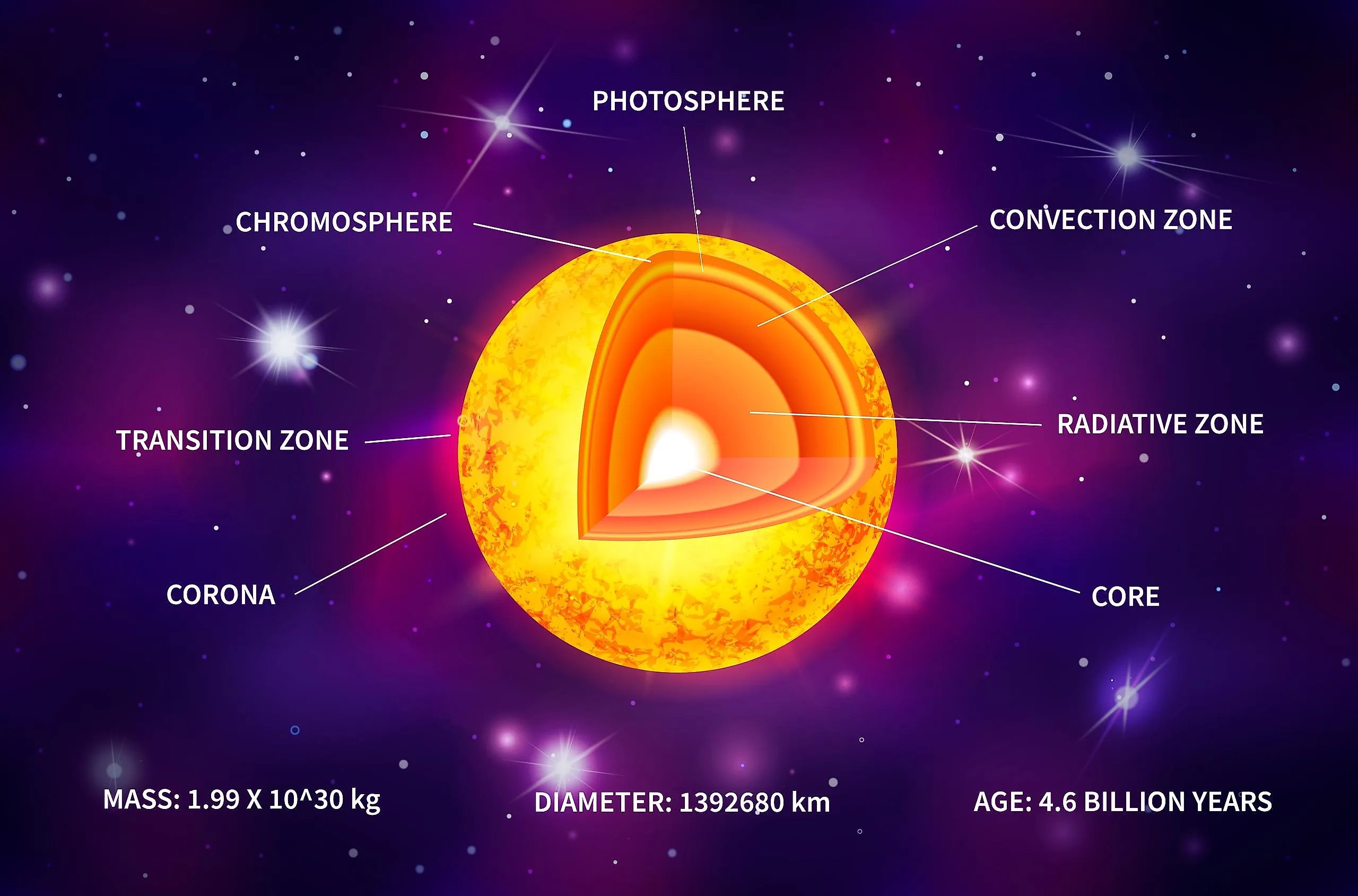
What Are The Layers Of The Sun?
- The layers of the Sun are divided into two larger groups, the outer and the inner layers. The outer layers are the Corona, the Transition Region, the Chromosphere, and the Photosphere, while the inner layers are the Core, the Radiative Zone, and the Convection Zone.
- There are four outer layers of the Sun, and the Corona is the outermost one. It starts at about 1300 miles above the photosphere, and its temperature is measured to be around 900,000 degrees Fahrenheit.
- There are three inner layers of the Sun, and the Convection zone is the outermost one. It completely surrounds the next layer, the Radiative zone, after which we have the Core, as the innermost layer of the Sun.
The Sun may look like a single, glowing sphere from Earth, but beneath its bright surface it is layered in ways as complex as any planet. Unlike Earth, the Sun has no solid crust or hard outer boundary. It is a vast ball of superheated hydrogen and helium, and its “layers” are defined not by rock or metal but by shifts in temperature, density, and the movement of energy.
Through helioseismology and decades of solar observation, scientists have pieced together a detailed picture of this internal structure. In the model most often used today, the Sun consists of seven major layers. Deep inside lie the Core, the Radiative Zone, and the Convective Zone, where nuclear fusion takes place and energy moves slowly outward. Above these interior layers rises the Sun’s atmosphere, beginning with the Photosphere and extending upward through the Chromosphere, the Transition Region, and finally the ethereal outer Corona, which stretches far into space.
The Outer Layers
- Corona
- Transition region
- Chromosphere
- Photosphere
Corona

The outermost layer of the Sun’s atmosphere is the corona, a faint, extended halo of superheated plasma that starts high above the visible surface. Instead of a sharp beginning, it extends from the thin chromosphere and reaches temperatures of millions of degrees Fahrenheit, much hotter than the layers below. Normally, the corona is hidden by the bright glare of the photosphere and cannot be seen with the naked eye.
During a total solar eclipse, when the Moon completely blocks the Sun’s bright disk, the corona becomes visible as a pale, ghostly crown stretching far into space. Astronomers can also observe it with a coronagraph, an instrument that mimics an eclipse by masking the Sun’s surface. The corona does not have a fixed outer boundary; instead, it gradually thins and flows outward as the solar wind, a stream of charged particles that fills the solar system.
Transition region
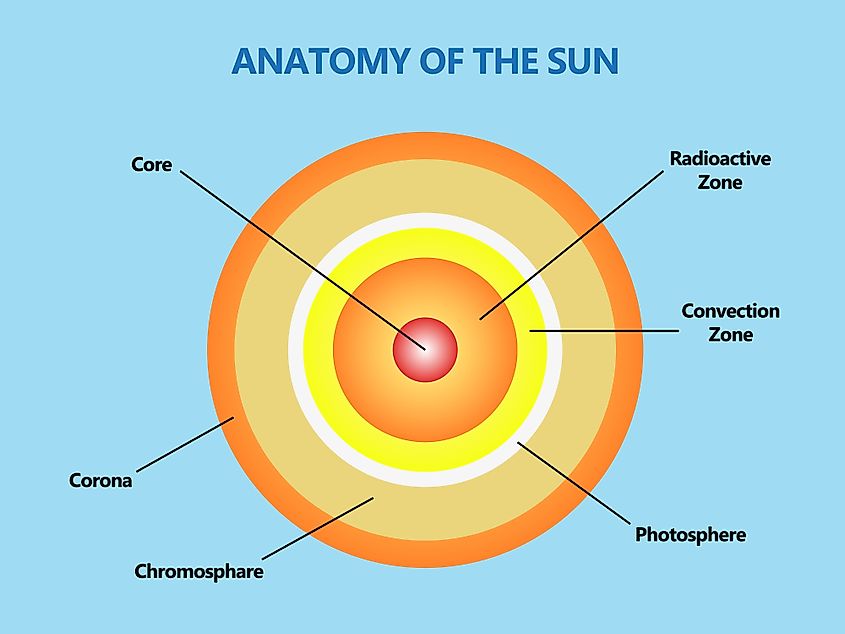
Above the chromosphere is the transition region, a surprisingly thin and turbulent boundary where the Sun’s atmosphere rapidly changes. Instead of being a sharply defined layer, it is a moving zone only a few hundred miles thick, very small compared to the size of the Sun.
Here, temperatures increase rapidly. The cooler plasma of the chromosphere, which measures tens of thousands of degrees, transitions to the million-degree heat of the corona. This sudden jump continues to be one of the Sun’s biggest mysteries and is believed to be driven by the movement of magnetic energy through the plasma. The transition region also marks where the solar atmosphere becomes thinner and starts to accelerate outward, fueling the solar wind that travels through the solar system.
Chromosphere
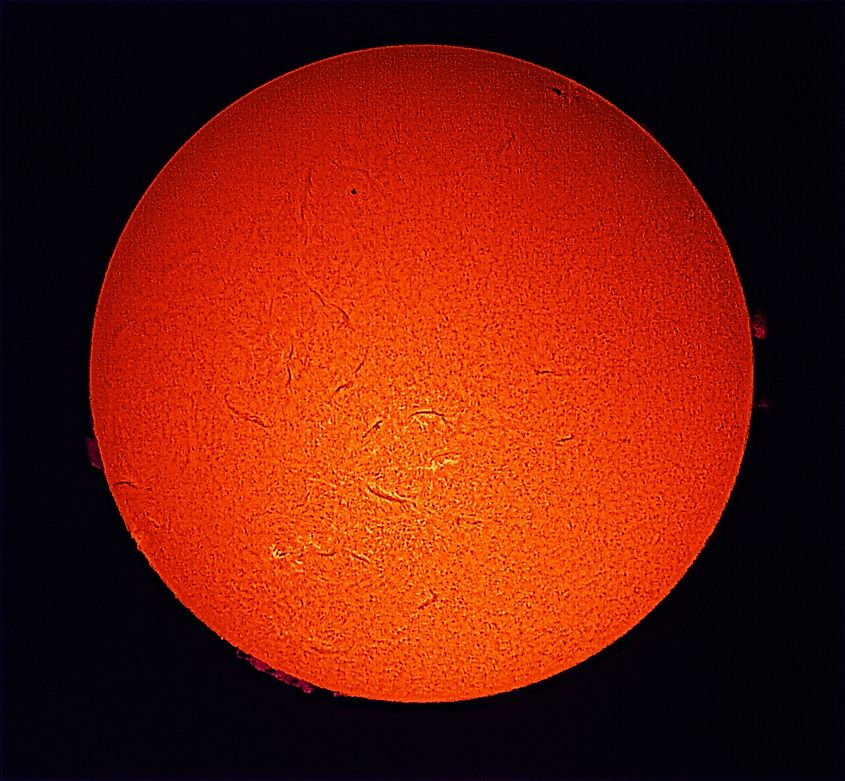
The chromosphere is directly above the photosphere and is a thin, active layer of the Sun’s atmosphere. It stretches for about one to two thousand miles and shows a sharp temperature increase, warming from roughly six thousand degrees Fahrenheit near its base to tens of thousands of degrees at its top. Although this rise is intense, it remains well below the million-degree temperatures found higher in the corona.
The chromosphere is usually hidden from view because it is overwhelmed by the brightness of the photosphere, but it becomes visible as a thin red rim during a total solar eclipse. Its reddish color comes from hydrogen emission and is one of the signatures of this active region, which is filled with jets of plasma, rapidly shifting magnetic fields, and structures that feed energy upward into the Sun’s upper atmosphere.
Photosphere
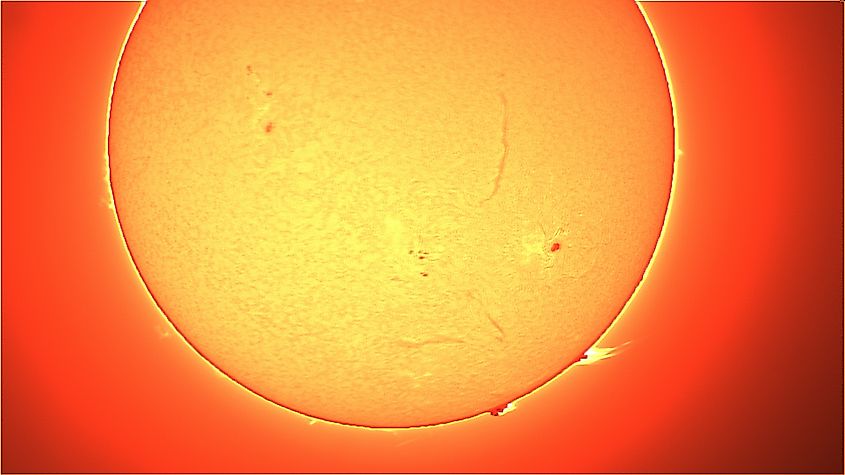
The photosphere forms the lowest part of the Sun’s atmosphere and is the layer we see when we look at the Sun through proper protection. Although only a few hundred miles thick, it is the source of nearly all the sunlight that reaches Earth. Temperatures here range from about ten thousand degrees Fahrenheit at the base to slightly cooler values near the top, creating the conditions that allow visible light to escape into space.
Across the photosphere is a pattern called granulation, a mottled texture created by currents of hot plasma rising from below and cooler material sinking back down. Darker, larger patches known as sunspots also appear in this layer. These spots are caused by intense magnetic fields that suppress convection and lower the local temperature, offering scientists important clues about the Sun’s magnetic activity and solar cycles.
The Inner Layers
- Convection zone
- Radiative zone
- Core
Convection zone
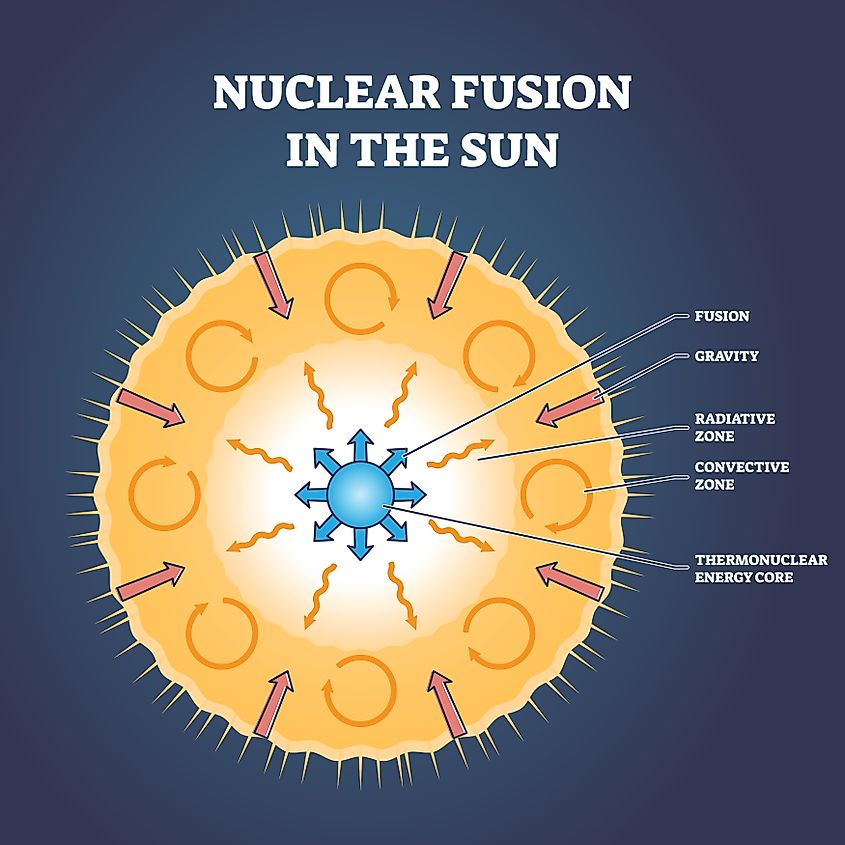
The convective zone makes up the outer third of the Sun’s interior and is the region where energy is carried upward by rising currents of hot plasma. As this material approaches the photosphere, it cools and sinks again, creating a continuous cycle of motion similar to a pot of boiling water. These turbulent movements shape the granulated pattern that appears across the Sun’s surface and contribute to the shifting magnetic fields that influence solar activity.
The top of the convective zone lies just beneath the photosphere, which marks the Sun’s visible surface. Beyond this point, energy no longer moves by convection but escapes directly as the sunlight we see from Earth.
Radiative zone
The radiative zone forms the middle layer of the Sun’s interior, surrounding the core and stretching outward for hundreds of thousands of miles. Temperatures here range from nearly fourteen million degrees Fahrenheit near the core to a few million degrees at the outer edge. In this region, energy moves outward in the form of light particles that scatter repeatedly through dense solar plasma, a slow and methodical process known as radiative diffusion.
Because photons are absorbed and re-emitted countless times as they travel, their progress through the radiative zone is extraordinarily slow. Estimates vary, but it can take hundreds of thousands of years for the energy generated in the core to migrate through this region before it finally reaches the turbulent convective zone above.
Core

At the center of the Sun lies the core, a dense sphere of superheated plasma where temperatures climb to nearly twenty-seven million degrees Fahrenheit. Pressures here are so intense that hydrogen nuclei are forced together in a sequence of nuclear reactions known as the proton-proton chain, producing helium, releasing energy, and generating a constant stream of neutrinos that escape into space.
The core occupies roughly the innermost quarter of the Sun’s radius and contains the conditions necessary for fusion, the process that powers our star. The energy created here begins its long journey outward as high-energy photons, scattering through the radiative zone and eventually emerging as the sunlight and heat that warm Earth. The balance between this outward energy and the inward pull of gravity keeps the Sun stable and shining.
Further Reading
If you are interested in exploring more about our solar system and the forces that shape it, the following WorldAtlas articles offer deeper context:
-
How Does Nuclear Fusion Power the Sun? A closer look at the reactions inside the core and why fusion is possible in such extreme conditions.
-
What Is a Solar Eclipse? Learn how the alignment of the Sun, Moon, and Earth reveals hidden layers like the chromosphere and corona.
-
What Causes Solar Flares and Coronal Mass Ejections? Discover how shifting magnetic fields in the Sun’s atmosphere unleash powerful bursts of energy.
-
How Does the Sun Affect Earth’s Climate? An overview of the Sun’s role in heating the atmosphere, driving weather patterns, and influencing long-term climate cycles.
-
The Structure of the Solar System A broad guide to the planets, dwarf planets, and other bodies shaped by the Sun’s gravitational pull.
